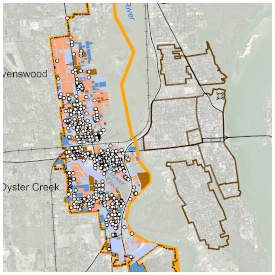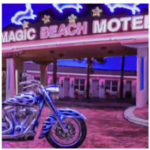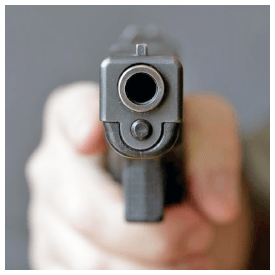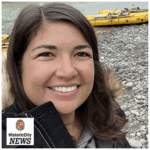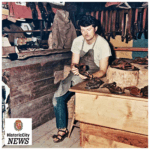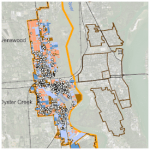
Historic City News learned today that the City of St. Augustine is receiving a $50,000 grant from the Florida Division of Historical Resources to fund a historic site survey of areas in West Augustine, as well as areas to the north around Fort Mose.
The survey has been ongoing and conducted by consultants with Environmental Services, Inc., a Terracon Company, and directed by St. Augustine’s Historic Preservation Division. Surveyors with this company are architectural historians and conduct their work from public rights-of-way, without any interruption to property owners or occupants.
“The Fort Mose area includes Fort Moosa Gardens and Saratoga Lake subdivisions. Some of the historical sites being surveyed include Zion Baptist Church, Shiloh Missionary Baptist Church, the Dr. R.B. Hayling home, and Chase Funeral Home,” said Jenny Wolfe, Historic Preservation Officer for the City of St Augustine. “In West Augustine, the boundary is generally Whitney Street on the west, Ravenswood Drive and SR-16 on the north, Anderson and Arapaho on the south, and the San Sebastian River on the east.”
The previous historical research conducted by St. Johns County, provides some easily accessible context which this survey project will be able to expand.
“The heritage of St. Augustine is broad — both spatially and culturally. To study that history in more detail, we must update the City’s inventory of historic resources,” Wolfe added.
A city-wide survey was performed in 1980 and a West Augustine survey was performed in 2008. Residents in the West Augustine area were recorded by the Census Bureau in 1930. Many were employees of the Florida East Coast Railway and several local service industries catering to downtown businesses in St. Augustine.
At the time of the first survey, 377 buildings were recorded from the pre-1930 time period. It is predicted that this survey could capture between 600-900 sites that were built from 1930-1975.
Several plantations benefitted from some amount of slave laborers, beginning a legacy of African American heritage. A narrative account in the 1980 survey says that Don Jose Peso de Burgo, namesake for the reconstructed de Burgo-Pellicer House on St. George Street, developed a thousand-acre tract that he acquired from two Triay brothers in 1798. The property included orange groves and a plantation home.
Suburban-type housing development occurred during the Florida Land Boom and after both the Great Depression and World War II time periods.
St. Augustine’s nineteenth and twentieth-century tourism economy began with Henry Flagler. It was only in 1828 that a bridge was constructed along King Street across the San Sebastian River, and not until 1923 that this area, then called “New Augustine”, was incorporated into the St. Augustine municipal boundary.
Larger tracts became divided into individual home lots, such as the 1874 development of Ravenswood by John Whitney. “Further subdivision and re-subdivision created those housing developments that we see today,” Wolfe said.
Although the survey results will not be used for property tax assessments, information from the survey will be used by the City’s Planning and Building Department to maintain current inventories as part of a certified preservation program.
More information on the African American heritage of this area, post-WWII subdivisions, and any events and places that shaped these neighborhoods and its commercial center is greatly needed. The City is asking for residents and community members to share their own personal history or knowledge of the areas being surveyed by calling 904-209-4326 or email jwolfe@citystaug.com.
Discover more from HISTORIC CITY NEWS
Subscribe to get the latest posts sent to your email.

